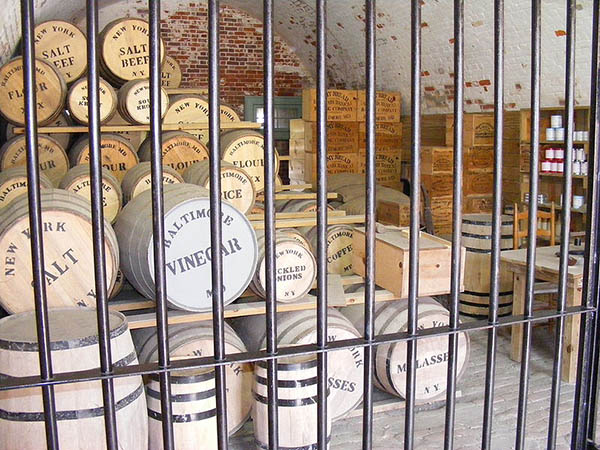Soldiers in the U.S. Civil War had difficult lives. One major source of discomfort was food, or rather the lack of it.
For the most part, infantrymen didn’t eat well on either side. Union soldiers fared slightly better than their Confederate enemies, but only just. During the U.S. Civil War eating was an unpleasant business. Union and Confederate troops had to make do with what they could get from their respective commissary departments. Their job was to see that large quantities of food made it across harsh terrain to the men who needed it most. What did combatants in the U.S. Civil War live on? This article looks at what these men consumed, on and off the battlefield.
The Union
For soldiers from the North, food was relatively plentiful when the war started in 1861. Thanks to a dependable railway system they rarely went short but the diet was monotonous. The best Union troops could hope for was salted pork and square or rectangular shaped biscuits called hardtack. Basically, they were nothing more than crackers made of flour, water, and salt.
As long as they were eaten fresh hardtack was moderately tasty and satisfying. The problem, however, was they often sat in storehouses for weeks before Union soldiers could get their hands on them. By that time the crackers were unappealing, and too difficult to chew in any case.
Union soldiers solved the dilemma of eating stale hardtack by soaking it in coffee, or breaking it into crumbs and cooking it in grease. When battle was imminent or during a long march soldiers had to store whatever they could take in a haversack.
The Confederacy
Unfortunately, the Confederate government never quite figured out how to ensure supplies of food would get to tired and hungry soldiers. The South didn’t have the infrastructure. Procurement and distribution problems grew steadily worse as the war progressed, and in the final few months of the conflict Confederate troops were desperate as they flirted with starvation.
Southerners generally ate coosh — cornmeal mixed with water or molasses. It loosely resembled oatmeal porridge. Like their Union foes, Confederates rarely cooked for themselves before the war and so their culinary skills were limited. Much of what they ate was fried and as unappetizing as the results were, it was all they had.
Other Means of Getting Food
Soldiers on both sides eagerly waited for care packages from their homes. Receiving them was a hit or miss affair, though. Everyone else was hungry, and the possibility of a soldier getting his package unopened with all the delicious goodies inside was slim at best. At other times the infantry brigades were moving too fast for the postal department to keep up.
Foraging was a necessary activity. Without food an army couldn’t fight let alone march, and it was understood by local homesteaders that they would have to surrender whatever they could spare when the army was near. Confederates took what they could from dead Union soldiers, and at times they managed to capture Union food storehouses but it was never enough. Chronic food shortages plagued Confederate forces from start to finish.
References:
- The American Civil War: A Military History by John Keegan, Knopf; First Edition, 2009
- The American Civil War: This Mighty Scourge of War by Gary W. Gallagher, Stephen D. Engle, Joseph T. Glatthar, Robert K. Krick, Osprey Publishing, 2003








